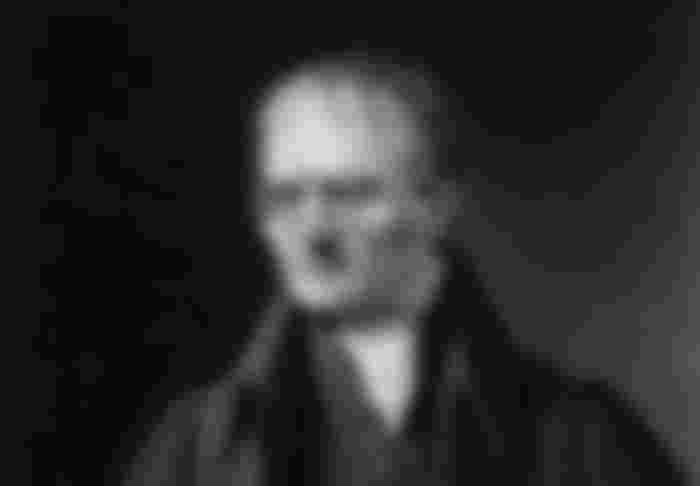In the early nineteenth century, John Dalton laid the foundation for atomism. There was an acknowledgment of this atomism, "All matter is made up of tiny indivisible particles called atoms."One should pay special attention to the word 'indivisible' here. Although John Dalton played a key role in explaining the structure of atomic matter, his idea of the indivisibility of atoms was not correct.
Of course, there was no way to give the right idea then. Who knew that the combination of electrons, protons, etc. inside these tiny atoms created a different world. And hidden in the middle of this unknown world is the key to a new era of human civilization? Man, of course, found that key called the 'electron', but he had to wait another century for it. I will tell the story of that journey of electron discovery in today's article.
It is said that 'necessity is the father of innovation'.So why the sudden need to discover electrons? In fact, the problem was the idea of electricity. Scientists knew very well about the flow of electricity up to that time. Many have also done some extraordinary work by applying electricity.However, it was not clear to anyone how electricity works at the most basic stage of matter. Which part of matter contains electrical exchange? What is his behavior? It is a crime to think that scientists will sit idly by relying on vague assumptions about these things.
They did not sit down. From the sixteenth century to William Gilbert, all the scientists who have worked on it have searched for the original source of electricity, although none have been completely successful. The journey of this discovery begins with an experiment by Humphrey Davy. He performed this experiment in 1808. Apparently, it was quite ordinary.

He placed the two carbon rods of the eyeballs very close together and applied a high voltage between them, as well as a flash of lightning with bright white light playing between the two rods. In addition to the possibility of making light from electricity in this experiment, it is also understood that the flow of electricity is also capable of jumping into space. But how is the flow of electricity possible? Who is carrying electricity from one rod to another? Davy began to work harder to find the answer to this question. But a problem arose, and after a short flash of lightning, the eyes of the carbon rod began to erode.
He realized that this was due to the oxygen in the air. To prevent this, Dewey devised a plan to keep the carbon rod's eye heads in an airtight space. He wrapped the heads of the rods in a glass tube and tried to get all the air out of it. He wanted to see electricity manipulation in an airless place. But he could not stop the decay of the rod. The main reason was the weakness of the vacuum technology at that time, he was not able to vacuum the tube adequately.
Although Davy failed, his idea for the test was remarkable. That is why, fifty years later, when Heinrich Geisler of Germany was able to create an advanced vacuum tube, he and his fellow researcher Julius Placker repeated Davy's experiment. It was more convenient for them to do this, because at the same time a German engineer named Daniel Ruhmkorf invented a technique to create quite high voltages using electrical induction.

They were able to successfully create an electric current and light between the vacuum tubes. However, they found that if the vacuum was at a very high level, that is, if the amount of air was reduced to a minimum, light could no longer be seen. Also when Geysler injected other gases instead of air into the tube, he noticed one more interesting thing. You see, different lights are created in the tube for each gas. When hydrogen gas is used, red light is seen instead of white light, and yellow light is produced by sodium vapor. Today we see neon lights on the streets or signboards based on this principle.
Maybe you are wondering why I am talking about neon light while telling the story of electron discovery? In fact, Geysler's experiment with neon light gave scientists a renewed interest in finding the root cause of electricity. Several researchers, especially in Britain and Germany, then began working on it. Their main questions were, how is electricity flowing between two electric gates in space? Is any charged particle running from one to the other? Or are the ions of the gas entering it flowing electricity? Or is it happening through a wave like an electromagnetic wave? Or who knows, maybe it's something completely different!
The answer to one of these questions came in the 18th century, when technology became more advanced. The British physicist William Crook showed that although light is no longer visible in a high vacuum, electricity flows through the tube. Seeing the amount of this electric current, it was understood that it could not happen due to gaseous ions. As a result of Crook's discovery, a question was dropped from the list of researchers. It is known that gas ions in the vacuum tube do not cause electricity to flow. But what is the real reason?

Crook hypothesized that this electricity flows through a ray of tiny, charged particles, which travel along a straight line from one electric gate to another. The electric gate from which these particles originate is called the cathode and the other is called the anode. He named the ray from the cathode to the anode 'cathode ray'. Crook designed a very nice test to prove his hypothesis.
He applied a layer of phosphorescent to the wall at one end of a tube so that it would glow when the cathode rays fell. In front of it he placed a metal in the shape of a cross. Then when he applied voltage to the tube, it was seen that the back wall was getting brighter, only shadows could be seen in the place along the cross. This makes it clear that a particle is actually escaping from the cathode to the anode that illuminates the wall of the tube, and that the shadow is visible in that part because the flow of the particle is being obstructed by the cross.
This experiment quite clearly supports Crook's hypothesis. Proves that the cathode ray is basically the flow of charged particles. At this time a large part of the British researchers accepted his theory. As Crook went on to do more work on this, he noticed that the direction of the rays deviated when a magnetic field was applied from outside.But for some unknown reason he did not find any effect of electric field in this ray. But if the cathode ray is the flow of charged particles, then applying a strong electric field from outside the tube will have an effect on it, and the direction of the ray will be deviated. Otherwise, his hypothesis becomes a bit weak.

As a result, many began to believe that electricity was not the flow of charged particles, but electric waves. An experiment by Hungarian scientist Philip Leonard makes a strong case for this. He proved that the cathode ray could pass through a very thin aluminum sheet tunnel. Leonard's observation supports the possibility of a wave. At this time most German scientists also began to support the possibility of cathode ray waves. Over time, the controversy over cathode rays continues to grow.
Many more researchers started working on this. One by one more contradictory observations began to come. Behind this argument, the question of this basic principle of science seems to have been suppressed. It was as if the duality of the ethnic ego of the English and the Germans had become even greater. One group says particles, another group waves.
Finally the British physicist J. Jay Thomson decided to end the debate. Thomson was then Cavendish Professor at the University of Cambridge, a position he himself had established by James Clark Maxwell. And it would not be an exaggeration to call Thomson the supreme leader of British scientists at that time. He therefore planned all sorts of experiments with cathode rays to put an end to all controversy. Needless to say, his own position allowed him to use the most advanced technologies of the time.
In the first step he was able to prove that the cathode ray had a negative charge. In the second round of testing, he disproved William Crook's test, which sparked controversy. He was able to show that the direction of the cathode ray deviates when an electric field is applied. And the aspect of this deviation also supports the fact that it has a negative charge. He then observed the effect of the magnetic field on the cathode ray in the third stage experiment.
Using Maxwell's electromagnetic formula from the data obtained from these experiments, he was able to measure the mass-to-charge ratio of the elementary particles holding the negative charge. Finally, on April 30, 1898, Thomson released the results of his research to the world. He appeared at the Royal Institution to give a lecture on the subject. Humphrey Davy, standing at the desk reminiscent of Michael Faraday, told the world about electrons.
He said that the cathode ray consists of particles containing negative charges. The properties of these particles are the same regardless of the type of material or source of electricity used. This is not great! Imagine for a second you were transposed into the karmic driven world of Earl. He said that the mass of this particle is only 1 part of 1838 parts of a hydrogen ion. However, this latest information has caused the most stir in the world of physics.
Because it is the lowest mass particle known until then. Its mass is equal to the smallest fraction of an atom. Until then, it was thought that the atom was the smallest and indivisible particle in the universe. But what could be smaller than an atom? J. Jay Thomson says, yes, maybe. However, Thomson could not give an explanation. That is, if the electron is a particle, how does it tunnel through the aluminum foil? This is the property of waves.
The answer to this question came twenty years later, when scientists came to know about the 'wave-particle duality'. Whatever the case may be, Thomson was instrumental in finding the electron, ending all controversy. For which he won the Nobel Prize in 1908. His discovery of the electron not only called into question atomism, but also opened a new horizon.
Man has discovered a new energy called electricity, the key secret of which has been discovered. The journey of vacuum electronics began with this journey of electron discovery. People started trying to control the electron, and that's why we've got today's electronic age.
Don’t go too far to give examples. How is it possible that you are reading this article on your mobile or computer? In fact, with every click, billions upon billions of electrons are running through all the complex circuits. They are presenting what you want on your computer screen. Much of modern technology is a product of this electronic age, which we are constantly enjoying; And behind it are the contributions of many scientists and engineers, including Thomson and Crook.




Very interesting article dear. Keep sharing.😍😍